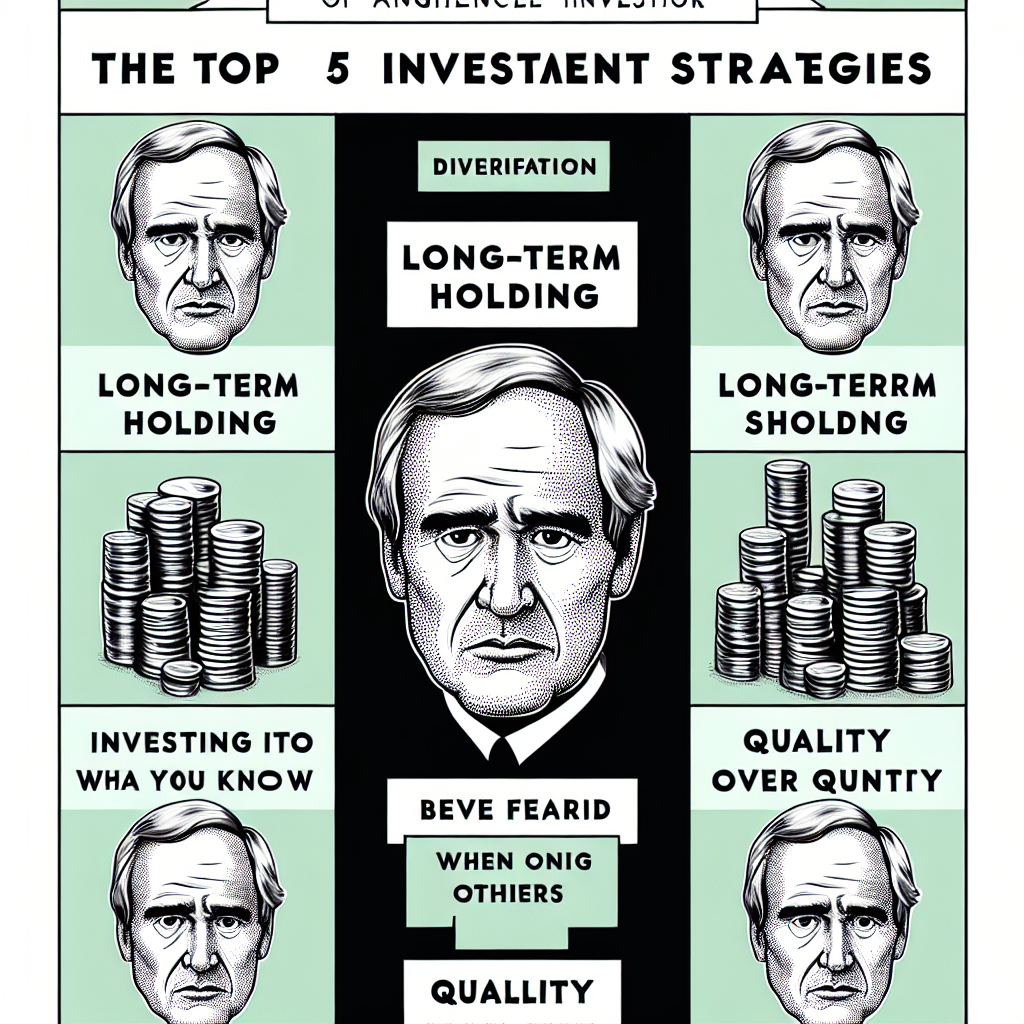Elon Musks Visioner: Framtiden för Teknik och Innovation
The Impact of Elon Musk’s Vision on the Future of Transportation
Elon Musk is a name that has become synonymous with innovation and technology. From electric cars to space exploration, Musk’s vision has had a profound impact on the world of transportation. His ambitious ideas and relentless drive have pushed the boundaries of what was once thought possible, and his influence on the future of transportation is undeniable.
One of Musk’s most well-known ventures is Tesla, the electric car company that has revolutionized the automotive industry. Musk’s vision for Tesla was to create sustainable and affordable electric vehicles that could compete with traditional gasoline-powered cars. Despite facing numerous challenges and skeptics, Musk’s determination and belief in his vision led to the success of Tesla.
The impact of Tesla on the future of transportation cannot be overstated. The company’s electric cars have not only reduced carbon emissions but have also forced other car manufacturers to invest in electric vehicle technology. This has led to a shift towards more sustainable transportation options, which is crucial in the fight against climate change.
But Musk’s vision for the future of transportation goes beyond just electric cars. He has also set his sights on revolutionizing the way we travel through his company, SpaceX. With the goal of making space travel more accessible and affordable, Musk has already made significant strides in this field. SpaceX has successfully launched and landed reusable rockets, drastically reducing the cost of space travel.
Musk’s vision for SpaceX is to eventually colonize Mars and make humanity a multi-planetary species. While this may seem like a far-fetched idea, Musk’s track record of turning seemingly impossible dreams into reality gives hope that this vision may one day become a reality.
In addition to electric cars and space travel, Musk has also set his sights on transforming the way we commute on Earth. His company, The Boring Company, aims to alleviate traffic congestion by creating a network of underground tunnels for high-speed transportation. This concept, known as the Hyperloop, would allow passengers to travel at speeds of up to 700 miles per hour, significantly reducing travel time between cities.
Musk’s vision for the Hyperloop has the potential to revolutionize the way we think about transportation. It could make long-distance travel faster and more efficient, reducing the need for air travel and its associated carbon emissions. The Hyperloop could also have a significant impact on urban transportation, reducing traffic congestion and improving air quality in cities.
But Musk’s impact on the future of transportation is not limited to just these three companies. His vision has also inspired other entrepreneurs and companies to invest in innovative transportation solutions. This has led to the development of electric planes, self-driving cars, and even flying cars.
Musk’s vision for the future of transportation is not without its critics and challenges. Some argue that his ideas are too ambitious and unrealistic, while others question the safety and feasibility of his projects. However, Musk’s unwavering determination and ability to think outside the box have proven time and time again that his visions are not just pipe dreams.
In conclusion, Elon Musk’s vision for the future of transportation has already had a significant impact on the world. From electric cars to space travel, his ideas have pushed the boundaries of what was once thought possible and have inspired others to think bigger and bolder. While there may be challenges and obstacles along the way, one thing is certain – Musk’s vision will continue to shape the future of transportation for years to come.
Exploring the Potential of Neuralink: Elon Musk’s Revolutionary Brain-Computer Interface
Elon Musk is known for his ambitious and innovative ideas that have revolutionized the fields of technology and innovation. From electric cars to space exploration, Musk has always pushed the boundaries of what is possible. One of his latest ventures, Neuralink, has the potential to change the way we interact with technology and even enhance our cognitive abilities.
Neuralink is a brain-computer interface company founded by Musk in 2016. The goal of this company is to develop a device that can be implanted in the human brain, allowing for a direct connection between the brain and computers. This technology has the potential to greatly improve the lives of people with disabilities, as well as enhance the capabilities of healthy individuals.
The idea of a brain-computer interface is not new, but what sets Neuralink apart is its approach. Instead of using traditional electrodes that are placed on the surface of the brain, Neuralink’s device, called the ”Link,” uses tiny threads that are inserted into the brain. These threads are thinner than a human hair and are designed to be minimally invasive, reducing the risk of damage to the brain.
The Link is also equipped with a chip that can process and transmit neural signals, allowing for a high-speed connection between the brain and computers. This technology has the potential to not only restore movement and sensation to paralyzed individuals but also to enhance cognitive abilities such as memory and learning.
One of the main applications of Neuralink’s technology is in the medical field. The Link has the potential to help people with spinal cord injuries, Parkinson’s disease, and other neurological disorders. By bypassing damaged nerves, the device can restore movement and sensation to paralyzed individuals. This could greatly improve their quality of life and give them a sense of independence that they may have thought was lost forever.
But the potential of Neuralink goes beyond just medical applications. Musk envisions a future where the Link is used to enhance human capabilities. With the ability to directly connect our brains to computers, we could potentially access information and perform tasks at a much faster rate. This could have a significant impact on industries such as education, where learning could be accelerated, and information could be accessed with just a thought.
Another potential application of Neuralink’s technology is in the gaming industry. With a brain-computer interface, gamers could control their avatars with their thoughts, making the gaming experience more immersive and realistic. This could also open up new possibilities for virtual reality and augmented reality technologies.
However, with any new technology, there are also concerns about its potential risks and ethical implications. One of the main concerns with Neuralink’s technology is the potential for hacking. With a direct connection to the brain, there is a risk of someone gaining access to a person’s thoughts and private information. Musk has addressed these concerns by stating that the Link will have multiple layers of encryption to protect against hacking.
There are also ethical concerns about the use of this technology to enhance human capabilities. Some argue that it could create a divide between those who can afford to enhance their abilities and those who cannot. Musk has stated that the initial focus of Neuralink is on medical applications, but he also believes that it is important to have a discussion about the ethical implications of this technology.
In conclusion, Neuralink has the potential to revolutionize the way we interact with technology and enhance our cognitive abilities. With its innovative approach and potential applications in various industries, it is clear that Musk’s vision for this brain-computer interface has the potential to shape the future of technology and innovation. However, it is important to carefully consider the potential risks and ethical implications of this technology as it continues to develop.
From SolarCity to Tesla: How Elon Musk is Revolutionizing the Energy Industry
Elon Musk is a name that has become synonymous with innovation and technology. From his early days as a co-founder of PayPal to his current ventures with SpaceX and Neuralink, Musk has consistently pushed the boundaries of what is possible. However, one of his most ambitious and impactful projects is his vision for the future of energy and the revolution he is leading in the energy industry.
Musk’s journey in the energy industry began in 2006 when he co-founded SolarCity, a company that aimed to make solar energy more accessible and affordable for homeowners. At the time, solar energy was still a relatively new concept, and the cost of installation was a significant barrier for many people. Musk saw the potential for solar energy to become a mainstream source of power and set out to make it a reality.
Under Musk’s leadership, SolarCity grew rapidly, becoming one of the largest solar energy companies in the United States. The company’s success was due in part to Musk’s innovative approach to financing solar installations. Instead of requiring customers to pay the high upfront costs, SolarCity offered a leasing model where customers could pay a monthly fee for the use of the solar panels. This made solar energy accessible to a wider range of people and helped to drive the adoption of renewable energy.
However, Musk’s vision for the future of energy did not stop at solar power. In 2008, he became the chairman of Tesla, a company that was initially focused on producing electric cars. Musk saw the potential for electric vehicles to reduce our dependence on fossil fuels and decrease carbon emissions. He also recognized that for electric cars to become mainstream, there needed to be a reliable and widespread network of charging stations.
To address this issue, Musk launched the Tesla Supercharger network, a network of fast-charging stations that could charge a Tesla vehicle in just 30 minutes. This was a game-changer for the electric vehicle industry, as it eliminated the range anxiety that many people had about owning an electric car. With the Supercharger network, Tesla was able to make electric vehicles a viable option for everyday use.
But Musk’s vision for the future of energy did not stop at solar power and electric cars. In 2015, he announced Tesla Energy, a division of Tesla that focused on developing and selling energy storage solutions for homes, businesses, and utilities. The flagship product of Tesla Energy is the Powerwall, a rechargeable lithium-ion battery that can store energy from solar panels or the grid. The Powerwall has the potential to revolutionize the way we use and store energy, making it possible for homes and businesses to become self-sufficient and reduce their reliance on the traditional power grid.
Musk’s vision for the future of energy is not just about making renewable energy more accessible and affordable; it is also about creating a sustainable and resilient energy system. In 2016, Tesla acquired SolarCity, bringing together two of Musk’s companies and creating a vertically integrated clean energy company. This integration allows for a more efficient and streamlined approach to providing renewable energy solutions.
Musk’s impact on the energy industry has been significant, and his vision for the future continues to drive innovation and change. His companies have not only made renewable energy more accessible and affordable but have also pushed other companies to follow suit. Musk’s relentless pursuit of a sustainable and clean energy future has inspired others to join the movement and has helped to accelerate the transition to renewable energy.
In conclusion, Elon Musk’s vision for the future of energy is one of accessibility, sustainability, and innovation. From SolarCity to Tesla Energy, Musk has revolutionized the energy industry and continues to push the boundaries of what is possible. With his leadership and determination, the future of energy looks brighter than ever before.
The Mars Mission: Elon Musk’s Ambitious Plan to Colonize the Red Planet
Elon Musk is a name that has become synonymous with innovation and technology. From electric cars to space exploration, Musk has been at the forefront of pushing boundaries and challenging the status quo. One of his most ambitious and talked-about projects is the Mars mission, which aims to establish a human colony on the Red Planet.
Musk’s fascination with Mars began at a young age when he read science fiction novels and dreamed of one day colonizing the planet. As he grew older and became a successful entrepreneur, he never let go of this dream. In 2002, he founded SpaceX with the goal of making space travel more affordable and eventually enabling humans to become a multi-planetary species.
The Mars mission is not just a pipe dream for Musk; it is a well-thought-out plan with a clear timeline. The first step is to send an unmanned spacecraft, the Mars Reconnaissance Orbiter, to gather data and images of the planet’s surface. This will help determine the best location for a human settlement and identify potential resources that can be utilized.
The next step is to send a cargo mission to Mars, which will carry supplies and equipment needed for the construction of a base. This will be followed by a manned mission, where a group of astronauts will be sent to establish the first human settlement on Mars. Musk envisions a self-sustaining city with a population of one million people within the next 50 to 100 years.
The Mars mission is not without its challenges, and Musk is well aware of them. The journey to Mars takes around six to nine months, and the astronauts will have to endure extreme conditions, including zero gravity and exposure to radiation. To overcome these challenges, SpaceX is developing advanced technology, such as reusable rockets and spacecraft, to make the journey more efficient and cost-effective.
Another major challenge is the availability of resources on Mars. The planet’s atmosphere is mostly carbon dioxide, which can be converted into oxygen for breathing and methane for fuel. However, other essential resources like water and food will have to be sourced from the planet itself. Musk plans to use a process called terraforming, where the planet’s environment is altered to make it more habitable for humans. This could involve melting the polar ice caps to release water and creating an artificial magnetic field to protect against radiation.
The Mars mission is not just about establishing a human settlement on another planet; it is also about advancing technology and pushing the boundaries of what is possible. Musk believes that the technology developed for this mission will have far-reaching benefits for humanity, from improving space travel to solving problems on Earth, such as climate change.
One of the most exciting aspects of the Mars mission is the potential for collaboration with other organizations and countries. Musk has expressed his desire to work with NASA and other space agencies to make this mission a reality. He also envisions a future where Mars becomes a hub for scientific research and a launchpad for further exploration of the solar system.
The Mars mission has captured the imagination of people all over the world, and many are eagerly following its progress. Musk’s vision and determination have inspired a new generation of scientists and engineers to pursue careers in space exploration. With each successful step towards the Red Planet, Musk is proving that anything is possible with determination, innovation, and a bold vision for the future.
Innovating for a Sustainable Future: How Elon Musk is Leading the Charge in Clean Energy and Climate Change Solutions
Elon Musk is a name that has become synonymous with innovation and pushing the boundaries of what is possible. From electric cars to space travel, Musk has made it his mission to revolutionize industries and create a better future for humanity. But perhaps one of his most ambitious and impactful endeavors is his focus on clean energy and climate change solutions.
Musk’s interest in sustainable energy began with his electric car company, Tesla. In 2004, he became one of the company’s co-founders and has since served as its CEO. Tesla’s goal is to accelerate the world’s transition to sustainable energy by producing electric vehicles and renewable energy products. Musk’s vision for Tesla goes beyond just creating a successful business; he wants to create a sustainable future for generations to come.
One of the ways Musk is achieving this is through the production of electric vehicles. Tesla’s electric cars have become increasingly popular, with the Model 3 becoming the best-selling electric car in the world in 2018. By making electric cars more accessible and desirable, Musk is helping to reduce the world’s reliance on fossil fuels and decrease carbon emissions.
But Musk’s vision for a sustainable future doesn’t stop at electric cars. In 2016, Tesla acquired SolarCity, a solar panel company, and merged it with their energy storage division to create Tesla Energy. This move allowed Tesla to offer a complete sustainable energy solution, from production to storage. The company’s solar panels and energy storage systems have been installed in homes, businesses, and even entire islands, providing clean and renewable energy to communities.
Musk’s focus on clean energy also extends to his other ventures, such as SpaceX. The aerospace company’s ultimate goal is to enable humans to live on other planets, but in the meantime, they are also working on reducing the environmental impact of space travel. SpaceX has developed reusable rockets, which significantly decrease the cost and waste associated with space launches. This innovation has the potential to make space travel more sustainable and accessible in the future.
In addition to his companies, Musk has also been vocal about the need for urgent action on climate change. He has repeatedly stated that we are running out of time to address this global issue and has called for a shift to sustainable energy sources. Musk has also been a strong advocate for a carbon tax, which would make it more expensive to use fossil fuels and incentivize the use of renewable energy.
Musk’s efforts in clean energy and climate change solutions have not gone unnoticed. In 2019, he was named one of Time’s 100 most influential people in the world for his work in sustainability. He has also received numerous awards and recognition for his contributions to the field, including being named one of the top 50 most influential people in clean energy by CleanTechnica.
But Musk’s vision for a sustainable future goes beyond just his own companies and initiatives. He has also been known to collaborate with other organizations and individuals to drive change. In 2015, he co-founded OpenAI, a non-profit research company focused on developing friendly artificial intelligence for the betterment of humanity. Musk has also pledged to donate $100 million towards a prize for the best carbon capture technology, encouraging others to find innovative solutions to combat climate change.
In conclusion, Elon Musk’s vision for a sustainable future is not just a dream; it is a reality that he is actively working towards. Through his companies, advocacy, and collaborations, he is leading the charge in clean energy and climate change solutions. Musk’s determination and passion for creating a better world for future generations make him a true visionary in the field of technology and innovation. As he continues to push the boundaries and challenge the status quo, we can only imagine what other groundbreaking solutions he will bring to the table in the future.


















